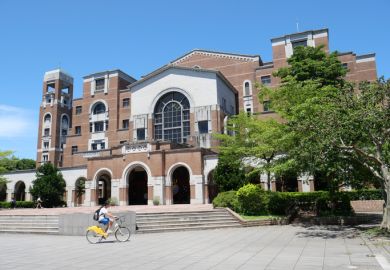Universities are “scrambling” to react to a deepfake pornography crisis that has stunned South Korean society.
An investigation by Korean newspaper Hankyoreh found that boys and young men were sharing sexually explicit images in Telegram chat rooms, taken from the social media profiles of their classmates, teachers and colleagues, and doctored using artificial intelligence.
These images, known as deepfakes, are posted in channels with thousands of members and are thought to have been created by students at hundreds of schools and universities across the country, generating outrage among the general public.
“The victims are women and teenage girls that the perpetrators know in schools and universities,” said Hannah Kim, an assistant professor at Sogang University. “Fear is growing among students and academics.”
This is not the first time universities have been caught up in such scandals: earlier this year, two alumni of Seoul National University (SNU) were arrested for sharing deepfake pornography of female SNU alumni on Telegram.
While the government and police have vowed to crack down on such behaviour, including launching an investigation into Telegram, academics believed universities were struggling to keep up with the evolving technology enabling it.
“It seems as though universities are scrambling to find solutions because the rise of deepfake content in this setting has risen so suddenly,” said Dr Kim.
“Koreans have really moved ahead light-speed with their digital technology,” said Theodore Jun Yoo, an associate professor at Yonsei University, explaining that although children are taught how to build and use technology from a young age, there is little focus on ethical education.
“So, when the kids grow up and go to college, something that might have started as a prank can become a digital crime.”
Many believed the events of recent weeks were not isolated but a symptom of widespread misogyny in Korean society. It follows the “molka epidemic” that began in the 2010s, where police received thousands of reports of women being secretly filmed in hotel rooms.
Dr Kim believed universities could help, including by providing information to students and staff on how to protect their images, as well as supporting victims who have been targeted.
An SNU spokesperson said that a dedicated task force was “accepting reports of damage and countermeasures online to understand the current situation” and has also established a “support system” for victims, including “legal and psychological support”.
“The Seoul National University Human Rights Centre is currently producing online digital sexual violence prevention education content…and plans to hold various human rights workshops and open human rights lectures,” they said.
Like SNU, many Korean universities have dedicated human rights centres tasked with responding to the situation on campus.
However, academics agreed that the root cause of these incidents needed to be tackled. “When a perpetrator is male and the victim is female, it’s simply reduced to an individual’s misconduct [instead of] understanding the social causes like misogyny,” said Dr Yoo.
“It is so new and such an important issue that needs to be studied and properly understood so that we can prevent it effectively,” said Scott Shepherd, an assistant professor at Chongshin University. “Of course we should punish people for committing crimes. We also need to speak to the people who are doing it so that we can understand what’s going wrong and fix that.”
Register to continue
Why register?
- Registration is free and only takes a moment
- Once registered, you can read 3 articles a month
- Sign up for our newsletter
Subscribe
Or subscribe for unlimited access to:
- Unlimited access to news, views, insights & reviews
- Digital editions
- Digital access to THE’s university and college rankings analysis
Already registered or a current subscriber?








